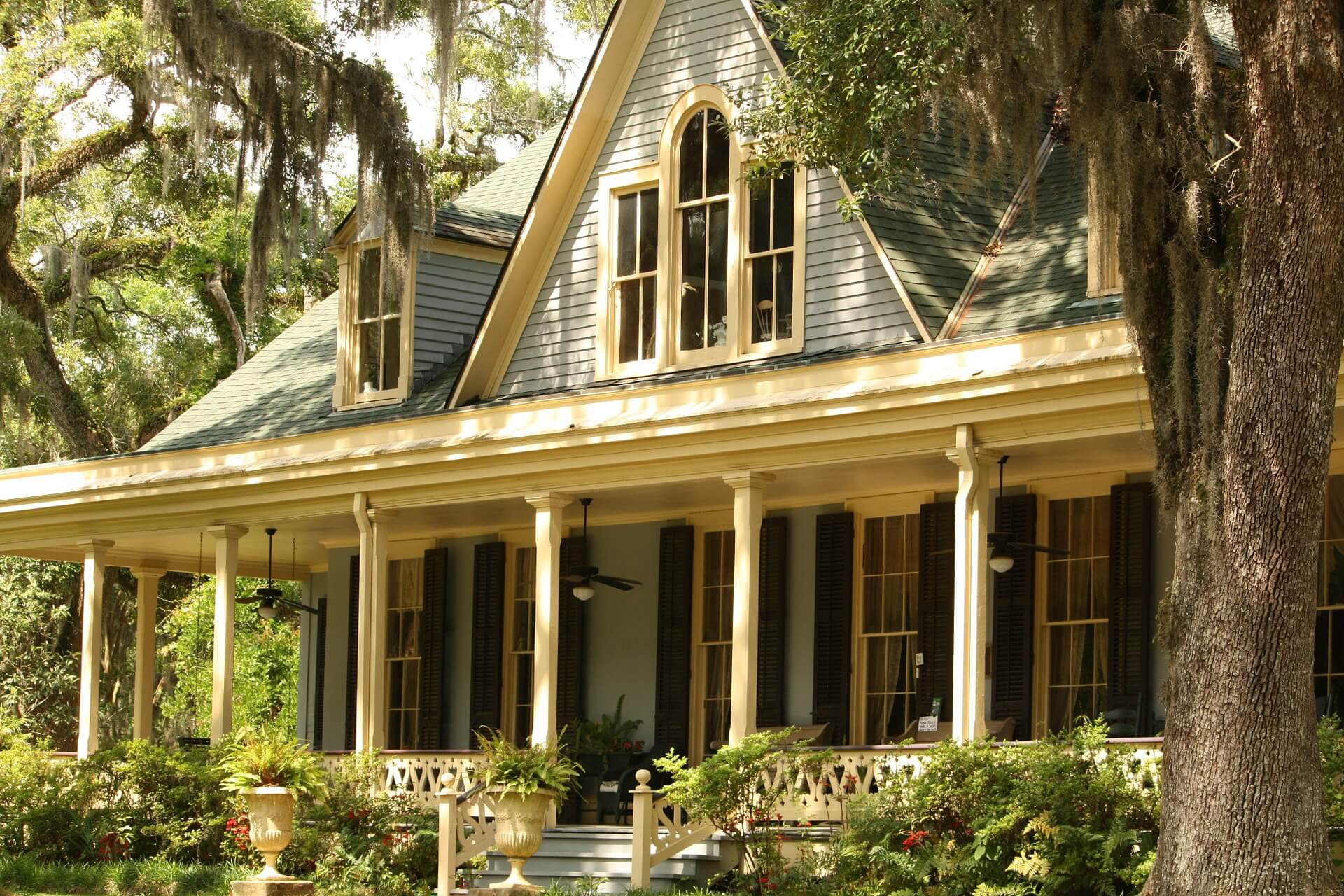How to Use Trees and Landscaping to Reduce HVAC Costs

How can you improve your home’s energy efficiency without making any changes to your home or HVAC system? Is it possible to use landscaping to reduce HVAC costs every year with some simple changes?
Yes! And we’ll show you how. By using landscaping strategies to supplement your home’s heating and cooling, you can add beauty and significant energy savings to your home.
Benefits of Good Landscaping:
- Reduces maintenance costs
- Reduces water use
- Cuts heating and cooling bills
- Protects home from hot and cold winds
- Shades your home from hot solar rays
- Lowers noise and air pollution
Energy-Efficient Landscaping to reduce HVAC Costs
Try these landscaping design tips for a more energy-efficient home all year long:
Plant Trees
If you don’t have any trees around your home, you probably aren’t benefitting from any of the advantages that shade and transpiration (translation: water vapor cooling) provides for your energy bill. Shade from trees can lower the overall temperature of your home by up to 10 degrees. That’s can be the difference between needing air conditioning or not.
Homes that have deciduous trees (lose their leaves in the winter) can benefit from the shade that the leaves and branches provide in the spring and summer while allowing solar energy to break through in the fall and winter when the temperatures get cooler and the branches get slimmer.
According to the Department of Energy, strategic trees around your home can reduce air conditioning costs by 15-50 percent, saving you about $100-$250 a year in energy costs. This energy-efficient landscape design not only looks beautiful; it saves you money every year on your energy costs.
In the fall and winter, the trees help you with your heating costs by providing some blockage from the wind, while allowing the warming rays of the sun to heat up your home.
Shading
We recommend planting deciduous trees as opposed to evergreens (which stay green all year) for shading. Deciduous trees block sun rays in the winter but not in the winter. You’ll also enjoy the changing colors during the seasons.
While it can be risky to have your outdoor air conditioning unit/heat pump directly underneath a tree, where there is a risk of a tree limb falling down and causing damage, shade around your outdoor heat pump has been proven to lower energy costs as well.
According to the Department of Energy, shade around your outdoor HVAC unit can increase energy-efficiency by around 10%.
There are some specific tips and tricks for shading your outdoor unit, so contact Fix-It 24/7 to discuss the right way to do it.
Block the Wind
Have you ever heard the term, “wind-chill effect” or “real-feel temperature”? Well, it has an effect on your home’s temperature as well. If you have a lot of wind in cold temperatures, a windbreak around the home can reduce wind speed “for a distance of as much as 30 times the windbreak’s height” (U.S. EPA).
Trees definitely help to block the wind and improve the energy efficiency of your heating during the cooler months, but there are other ways to create a windbreak as well. Walls can provide a windbreak, but they probably won’t look as good.
Planting trees and creating wind barriers around your home is also a great way to increase privacy around the home. If you are worried about neighbors, passersby, and peeping Toms from taking a look inside your home, try constructing a wind barrier and trees and you’ll kill two birds with one stone, so to speak.
In the summer, hot winds make their way through all of the air leaks in your home. In the winter, cold winds do the same thing. Even if you have weatherized your home and increased insulation, you’ll never be able to fix all of the energy inefficiencies around your home, like thin windows, walls, and air leaks.
Therefore, a great way to supplement all of your insulation efforts is to reduce the amount of wind energy that is hitting your home all year. For the best wind protection, set your windbreaking trees a distance of 2-3 times the height of the trees.
Evergreens are a good way to provide a wind barrier all year since they do not lose their leaves, but remember that the extra shade from the sun in the winter could present a problem.
When is the best time to plant trees in Colorado?
According to American Arbor Care, the best time to plant trees in Colorado is early spring. Fall is also a good time, but be sure to complete all planting by mid-October. So start your research now and plan to call 811 to know if you can dig in your desired location. Also, avoid planting too close to buildings or power lines. We recommend contacting an arborist and HVAC professional for the best landscaping strategy.
For more information on winterization tips and using landscaping to reduce HVAC costs, contact Fix-It 24/7.
When Your House is in Trouble, Call the Green Bubble!
Service You Can Count On
We came from humble beginnings, having started as just a small family
business. And while we’ve experienced growth, Fix-It 24/7






